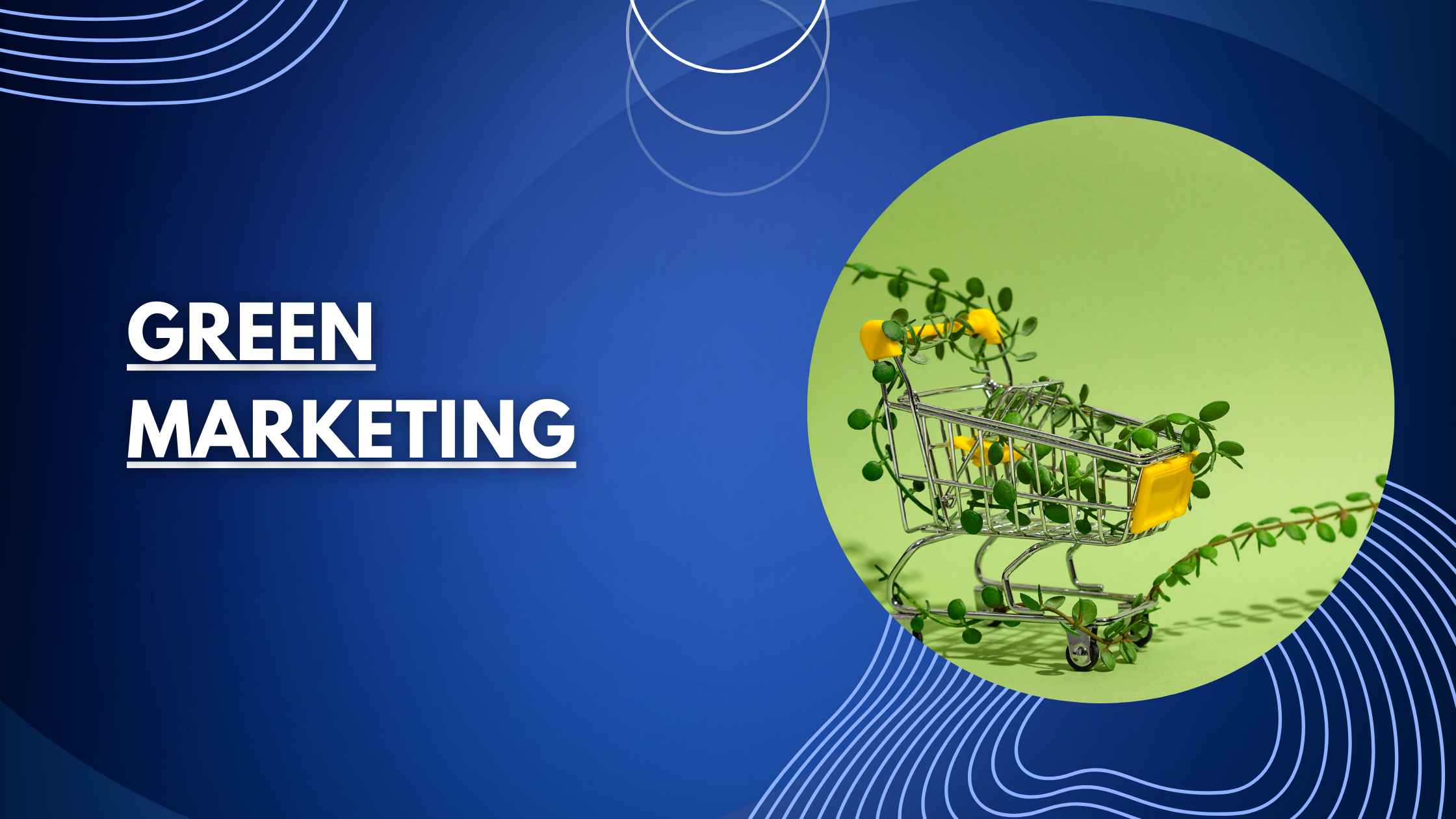
Green Marketing: Strategies for Sustainable Success
- Understanding Green Marketing
- The Importance of Sustainability
- Key Strategies for Green Marketing
- Product Innovation and Eco-Friendly Design
- Eco-Friendly Packaging
- Transparency and Certification
- Educational Marketing
- Sustainable Supply Chain Management
- Benefits of Green Marketing
- Overcoming Greenwashing
- Implementing Green Marketing
- Measuring and Communicating Sustainability
- Conclusion: Green Marketing for a Sustainable Future
In an era where environmental concerns are at the forefront of global discussions, businesses must adapt and embrace sustainable practices to meet the demands of conscious consumers. “Green Marketing” has emerged as a vital strategy for companies aiming to balance profit with environmental responsibility. In this comprehensive guide, we will explore the concept of Green Marketing, its strategies, the benefits it offers, and how to effectively implement it to achieve both ecological and economic success.
Table of Contents
1. Understanding Green Marketing
Green Marketing, also known as environmental marketing or sustainable marketing, is an approach that emphasizes the importance of environmental responsibility and sustainability in all aspects of business. It involves promoting products, services, and corporate practices that have a minimal negative impact on the environment while meeting the needs of consumers.
Green Marketing is not just about creating an eco-friendly image; it’s about integrating sustainability into the core values and operations of a business. This can encompass everything from product design and sourcing to marketing messages and customer engagement.
2. The Importance of Sustainability
The need for sustainability in business has never been greater. Several factors contribute to the increasing importance of Green Marketing:
Consumer Awareness: Today’s consumers are more environmentally conscious and seek eco-friendly products and brands.
Regulatory Pressure: Governments around the world are implementing stricter environmental regulations.
Resource Scarcity: Depletion of natural resources and the impact of climate change necessitate sustainable practices.
Competitive Advantage: Brands that prioritize sustainability often gain a competitive edge.
Incorporating sustainability into your marketing strategy isn’t just about keeping up with trends; it’s about ensuring long-term viability.
3. Key Strategies for Green Marketing
To effectively implement Green Marketing, consider these key strategies:
a. Product Innovation and Eco-Friendly Design
One of the core principles of Green Marketing is designing products with reduced environmental impact. This includes:
Reducing Waste: Design products with minimal packaging and disposable parts.
Energy Efficiency: Create products that consume less energy during use.
Biodegradable Materials: Use materials that are biodegradable or recyclable.
Longevity: Build products that are durable and have a longer lifespan.
b. Eco-Friendly Packaging
Packaging plays a significant role in Green Marketing. Opt for eco-friendly packaging options, such as:
Recyclable Materials: Use packaging that can be easily recycled.
Minimalist Packaging: Reduce excess packaging to minimize waste.
Biodegradable Options: Explore biodegradable packaging alternatives.
Reusable Packaging: Consider reusable packaging that customers can use again.
c. Transparency and Certification
Transparency is key to Green Marketing. Provide clear information about your sustainability efforts and certifications, such as:
Eco-Labels: Display eco-labels and certifications that demonstrate your commitment to sustainability.
Transparency Reports: Publish reports detailing your environmental initiatives and progress.
Traceable Supply Chains: Ensure transparency in your supply chain, showcasing ethical sourcing and production practices.
d. Educational Marketing
Educational marketing is a powerful tool in Green Marketing. Inform consumers about the environmental impact of their choices and how your products or services offer eco-friendly alternatives. Content types can include blog posts, webinars, videos, and social media campaigns.
e. Sustainable Supply Chain Management
Extend your commitment to sustainability beyond your products to your entire supply chain. Work with suppliers and partners who share your eco-conscious values. Consider factors such as transportation efficiency, ethical labor practices, and waste reduction.
4. Benefits of Green Marketing
Implementing Green Marketing strategies offers numerous advantages:
Enhanced Reputation: Green Marketing can improve your brand’s reputation and foster trust among environmentally conscious consumers.
Competitive Advantage: Differentiate your brand in a crowded market by highlighting your sustainability efforts.
Cost Savings: Sustainable practices, such as reducing waste and energy consumption, can lead to cost savings in the long run.
Attracting Eco-Conscious Consumers: Attract a growing consumer segment actively seeking eco-friendly options.
Future-Proofing: Prepare your business for future environmental regulations and changing consumer preferences.
5. Overcoming Green washing
While Green Marketing is essential, it’s crucial to avoid “greenwashing,” which refers to misleading or false environmental claims. To overcome greenwashing:
Be Transparent: Ensure that your sustainability claims are backed by concrete actions and data.
Avoid Exaggeration: Make accurate and verifiable statements about your environmental efforts.
Third-Party Certification: Seek certification from reputable organizations to validate your green claims.
Continuous Improvement: Continuously work to improve your sustainability practices.
Maintaining authenticity and integrity in your Green Marketing efforts is essential to build trust with consumers.
6. Implementing Green Marketing
To implement Green Marketing effectively:
Conduct a Sustainability Audit: Assess your current environmental impact and identify areas for improvement.
Set Clear Goals: Establish specific, measurable, achievable, relevant, and time-bound (SMART) sustainability goals.
Educate Your Team: Ensure that your employees understand the importance of sustainability and their role in its implementation.
Involve Stakeholders: Engage with suppliers, partners, and customers in your sustainability journey.
Regularly Monitor and Report: Continuously track and measure your sustainability efforts and communicate progress to stakeholders.
7. Measuring and Communicating Sustainability
Measuring and communicating sustainability efforts is crucial for Green Marketing success. Consider these steps:
Use Key Performance Indicators (KPIs): Define KPIs to measure sustainability performance, such as carbon footprint reduction, waste reduction, or energy efficiency.
Regular Reporting: Publish sustainability reports that provide transparency about your efforts and achievements.
Engage Stakeholders: Share your sustainability journey with customers, employees, and investors through various channels, including your website, social media, and annual reports.
Feedback and Improvement: Solicit feedback from stakeholders and use it to improve your sustainability initiatives.
8. Conclusion: Green Marketing for a Sustainable Future
In conclusion, Green Marketing is more than a trend; it’s a necessity for businesses to thrive in a world where environmental responsibility matters. By implementing sustainable practices, designing eco-friendly products, and adopting transparent communication, you can effectively connect with environmentally conscious consumers and build a reputation as a socially responsible brand.
Green Marketing is not only about reducing your environmental impact but also about contributing to a more sustainable future for our planet. It’s a win-win strategy that benefits both your business and the world we live in.

